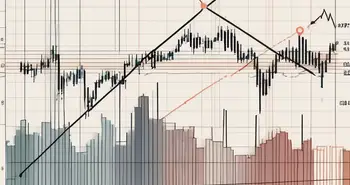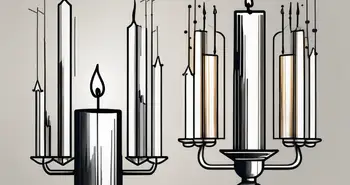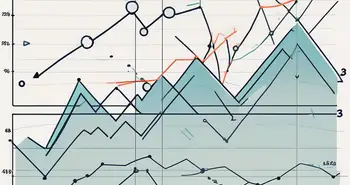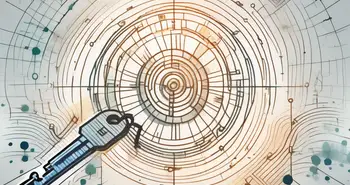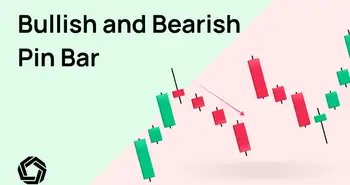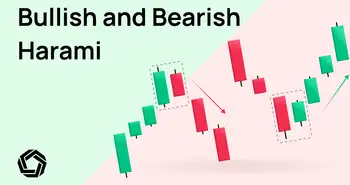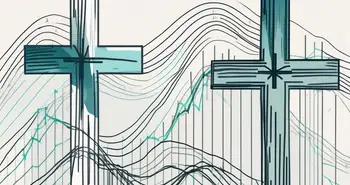What Are Double Bottom Patterns? W Pattern Trading Explained
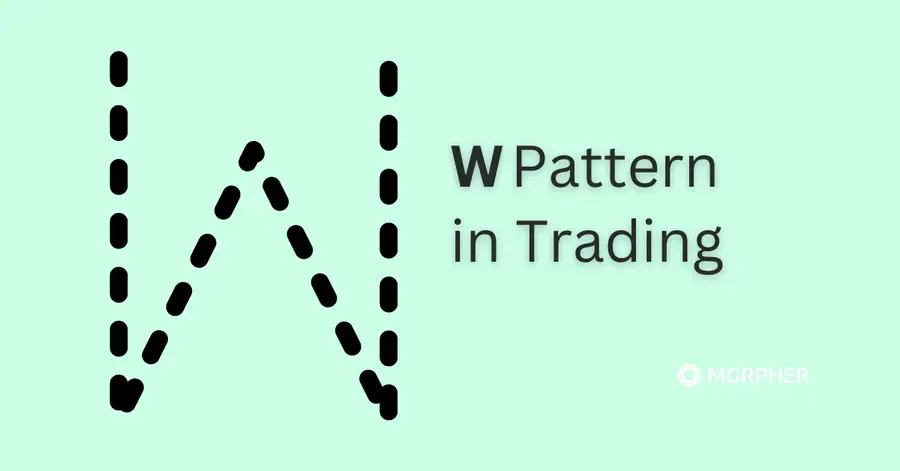
Just like the M pattern signals a market shift from bullish to bearish, the W pattern—also known as the double bottom—reveals a potential reversal from a downtrend to an uptrend. Candlestick patterns like the W pattern provide traders with actionable insights into market sentiment. When identified correctly, the W pattern can serve as a powerful signal to buy into a trend reversal, capitalizing on the market’s shift from bearish to bullish. In this guide, we’ll break down what the W pattern is, how to identify it, and how to use it effectively in your trading strategy.
What is W Pattern in Trading?
The W pattern, also known as a double bottom, is a bullish reversal pattern that traders use to signal the potential shift from a downtrend to an uptrend. It earns its name from its distinctive shape, resembling the letter “W” on price charts, where two lows are formed, separated by a temporary peak (the resistance level).
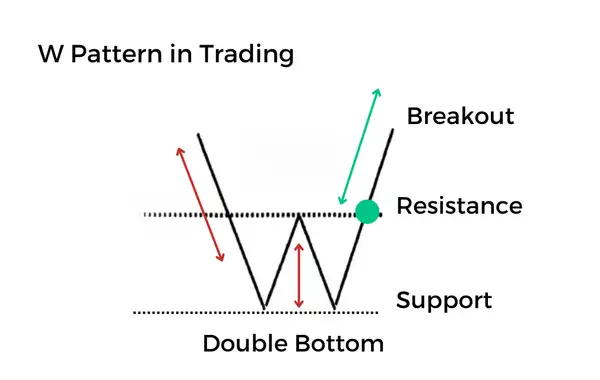
This pattern typically appears after a prolonged decline in price. The first low indicates strong selling pressure, but as the price rebounds from this point, it suggests that buyers are beginning to step in. The second low fails to reach the same depth as the first, showing weakening bearish momentum. Once the price breaks above the resistance level created between the two troughs, the W pattern is confirmed, signaling that the trend is likely to reverse.
The W pattern is particularly valuable for traders because it highlights a shift in market sentiment, from seller dominance to buyer control. Identifying this pattern allows traders to potentially enter long positions, anticipating a rise in price as the market trend reverses.
What makes the W pattern noteworthy is its predictive nature. The pattern typically indicates a bullish reversal, suggesting that the current downtrend is about to end and an uptrend is on the horizon. This makes it a valuable tool for traders looking to capitalize on potential upward price movements.
Ready to master popular candlestick patterns like the W pattern? Look no further than Morpher! With Morpher's customizable price charts powered by TradingView, you can annotate charts, highlight crucial points with colors, jot down notes directly on the chart, and save your insights. Join Morpher today and start trading smarter with our welcome bonus!
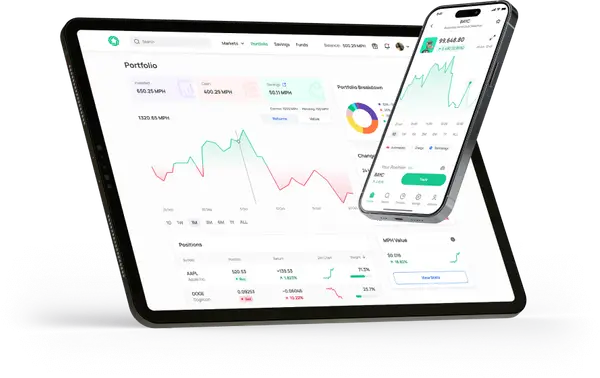
How to Identify the W Pattern in Trading
The W pattern forms during a downtrend and signals that bearish momentum is fading, and a bullish reversal may be on the horizon. Here's how to spot it on a chart:
- First Trough: The price falls and reaches a low point, representing the first trough of the W pattern. This decline is usually a continuation of an existing downtrend.
- Temporary Resistance: After the first trough, the price rises slightly, hitting a resistance level where the upward momentum stalls. This brief rally creates the middle of the “W.”
- Second Trough: The price drops again but fails to break below the first trough, signaling a loss of downward strength. This forms the second bottom of the W shape.
- Break of Resistance: Once the price rises again and breaks above the resistance level (neckline), the W pattern is confirmed, indicating that the market is shifting to a bullish trend.
Understanding Sentiment Behind the W Pattern
Each part of the W pattern tells a story about the market's psychology:
First Trough: Bearish Exhaustion
The first trough represents a point of intense selling pressure, continuing the downtrend. However, as the price hits this low, sellers begin to lose strength. Traders who were short are starting to take profits, and some buyers see the low as an opportunity to enter the market at a discount.
Temporary Resistance: Uncertainty
The slight rebound from the first trough shows a shift in sentiment. Buyers push the price up, but not enough to fully change the trend. This resistance level reflects uncertainty in the market, where both buyers and sellers are waiting to see which side will take control.
Second Trough: Failure of Sellers
The second trough signals that sellers are no longer able to push the price lower. The fact that the second bottom fails to breach the first shows diminished bearish momentum. Sellers are running out of steam, and buyers are gaining confidence.
Break of Resistance: Bullish Takeover
Once the price breaks through the resistance level (neckline), it confirms that buyers have taken control. The W pattern indicates a reversal to an uptrend, and traders can confidently look for buying opportunities.
Trading the W Pattern Strategies
Trading the W pattern successfully requires patience and careful timing. The key is not to rush into a trade too early. It’s essential to (1) wait for the price to confirm the pattern by breaking above the neckline, the resistance level that forms between the two troughs. This breakout signals that the market has likely reversed its trend from bearish to bullish, giving you the green light to consider entering a long position.
Once the breakout occurs, it’s important to manage your risk effectively. A good practice is to (2) place your stop-loss just below the second trough of the W pattern. This ensures that your trade is protected if the market unexpectedly turns against you, while also giving the position some room to fluctuate without prematurely closing.

To set a realistic profit target, (3) measure the vertical distance between the neckline and the lowest point of the W pattern. This distance can then be projected upward from the neckline to estimate how far the price may rise in the bullish trend. This method provides a structured approach to exiting the trade based on the pattern’s size.
Alongside price action, (4) volume is a critical factor in confirming the breakout’s strength. Ideally, you’ll want to see an increase in volume as the price breaks above the neckline. This rise in volume suggests that buyers are stepping in with conviction, which strengthens the likelihood of a sustained upward move. Without this volume spike, the breakout might lack the momentum needed to continue upward, signaling potential caution.
For additional confirmation, many traders (5) use technical indicators such as the RSI or MACD in conjunction with the W pattern. These indicators can provide insight into the market’s underlying momentum, helping to validate that the bullish reversal is backed by real buying pressure.
Common Mistakes in W Pattern Trading
Entering Too Early: Many traders jump in before the neckline breaks, only to see the price fail to sustain the upward move.
Overlooking Volume: A breakout without volume confirmation can be a sign of weak momentum, leading to false breakouts.
Setting Stop-Loss Too Tight: Placing your stop-loss too close to the second trough can cause you to get stopped out by market noise.
Expecting Perfect Symmetry: W patterns aren’t always perfectly symmetrical. Focus on the overall structure and meaning, rather than exact mirror-like formations.
Ignoring the Trend: Remember, the W pattern forms after a downtrend. Misidentifying this can lead to trading mistakes.
FAQs
- What is a W pattern?
A W pattern is a charting pattern used in technical analysis that indicates a bullish reversal. It's characterized by two consecutive lows in price that form the bottoms, with a peak in between, creating a W-like formation on the chart. - How do you trade the W pattern?
Trading the W pattern involves identifying the pattern formation, waiting for the breakout, and then executing a trade. It's important to wait for the breakout before entering a trade to avoid potential losses. - What are common mistakes in W pattern trading?
Common mistakes in W pattern trading include failing to correctly identify the pattern and failing to set a stop-loss order. Both of these mistakes can lead to significant losses.
In conclusion, the W pattern is a powerful tool in a trader's arsenal. When correctly identified and traded, it can lead to significant profits. However, it's important to trade this pattern with patience and discipline, waiting for the breakout before entering a trade and always setting a stop-loss order to protect against potential losses.
Join Morpher today and experience a new era of investing. With zero fees, infinite liquidity, and the ability to trade across a multitude of markets, Morpher is the perfect platform for traders who value flexibility and innovation. Whether you're looking to invest fractionally, short sell without interest fees, or leverage your trades up to 10x, Morpher has you covered. Plus, with our secure, non-custodial Morpher Wallet, you'll have full control over your funds. Don't miss out on the opportunity to transform your trading experience. Sign Up and Get Your Free Sign Up Bonus to start trading on the cutting-edge of blockchain technology.

Disclaimer: All investments involve risk, and the past performance of a security, industry, sector, market, financial product, trading strategy, or individual’s trading does not guarantee future results or returns. Investors are fully responsible for any investment decisions they make. Such decisions should be based solely on an evaluation of their financial circumstances, investment objectives, risk tolerance, and liquidity needs. This post does not constitute investment advice.

Painless trading for everyone
Hundreds of markets all in one place - Apple, Bitcoin, Gold, Watches, NFTs, Sneakers and so much more.

Painless trading for everyone
Hundreds of markets all in one place - Apple, Bitcoin, Gold, Watches, NFTs, Sneakers and so much more.


